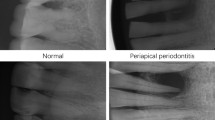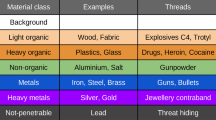Abstract
The convenience of imaging has improved with digitization; however, there has been no progress in the methods used to prevent human error. Therefore, radiographic incidents and accidents are not prevented. In Japan, image interpretation is conducted for incident prevention; nevertheless, in some cases, incidents are overlooked. Thus, assistance from a computer-aided quality assurance support system is important. This study developed a method to identify hand image direction, which is an elementary technology of a computer-aided quality assurance support system. In total, 14,236 hand X-ray images were used to classify hand directions (upward, downward, rightward, and leftward) commonly evaluated in clinical settings. The accuracy of the conventional classification method using original images, classification method with histogram equation images, and a novel classification method using binarization images for background removal via U-Net segmentation was evaluated. The following classification accuracy rates were achieved: 89.20% if the original image was input, 99.10% if the histogram equation image was input, and 99.70% if binarization images for background removal via U-Net segmentation was input. Our computer-aided quality assurance support system can be used to identify hand direction with high accuracy.







Similar content being viewed by others
References
Guideline for KAKUTEI of image information v. 2.1. Title of subordinate document. In: Public Interest Incorporated Association Japanese Society of Radiological Technology, August 18, 2014, https://www.jsrt.or.jp/data/wp-content/uploads/2012/10/Guideline_for_KAKUTEI_of_Image_Information.pdf. Accessed 12 May 2022 (Japanese).
Yamada T, Lee Y, Hasegawa A. Computerized classification of right or left and directions of arms in forearm X-ray images using deep learning. Med Imaging Inform Sci. 2019;36:83–7. https://doi.org/10.11318/mii.36.83.(Japanese).
Muroi T, Lee Y, Tsai DY, et al. Detection method for blurred regions in radiographs. Jpn J Radiol. 2014;70:254–7. https://doi.org/10.6009/jjrt.2014_jsrt_70.3.254.
Nose H, Shiraishi J. Automated detection of radiopaque markers in chest and abdomen radiography. Jpn J Radiol Technol. 2018;74:344–53. https://doi.org/10.6009/jjrt.2018_JSRT_74.4.344 (Japanese).
Morishita J, Katsuragawa S, Kondo K, et al. An automated patient recognition method based on an imagematching technique using previous chest radiographs in the picture archiving and communication system environment. Med Phys. 2001;28:1093–7. https://doi.org/10.1118/1.1373403.
Morishita J, Katsuragawa S, Sasaki Y, et al. Potential usefulness of biological fingerprints in chest radiographs for automated patient recognition and identification. Acad Radiol. 2004;11:309–15. https://doi.org/10.1016/S1076-6332(03)00655-X.
Toge R, Morishita J, Sasaki Y, et al. Computerized image searching method for finding correct patients for misfiled chest radiographs in a PACS server by use of biological fingerprints. Radiol Phys Technol. 2013;6:437–43. https://doi.org/10.1007/s12194-013-0221-6.
Shimizu Y, Matsunobu Y, Morishita J. Evaluation of the usefulness of modified biological fingerprints in chest radiographs for patient recognition and identification. Radiol Phys Technol. 2016;9:240–4. https://doi.org/10.1007/s12194-016-0355-4.
Shimizu Y, Morishita J. Development of a method of automated extraction of biological fingerprints from chest radiographs as preprocessing of patient recognition and identification. Radiol Phys Technol. 2017;10:376–81. https://doi.org/10.1007/s12194-017-0400-y.
Sakai Y, Takahashi K, Iwase K, et al. Usefulness of biological fingerprints and template matching techniques in bedside chest radiography for patient identification and preventing filing mistakes. Jpn J Radiol Technol. 2018;74:1154–62. https://doi.org/10.6009/jjrt.2018_JSRT_74.10.1154 (Japanese).
Ronneberger O, Fischer P, Brox T. U-Net: convolutional networks for biomedical image segmentation. Medical Image Comput Comput Assist Interv. 2015;9351:234–41. https://doi.org/10.1007/978-3-319-24574-4_28.
Szegedy C, Liu W, Jia Y, et al. Going deeper with convolutions. In: Proceedings of 2015 IEEE conference on CVPR 2015; 2015. p. 1–9. https://doi.org/10.1109/CVPR.2015.7298594.
Russakovsky O, Deng J, Su H, et al. ImageNet: a large-scale hierarchical image database. Int J Comput Vis. 2015;115:211–52. https://doi.org/10.1007/s11263-015-0816-y.
Lakhani P, Sundaram B. Deep learning at chest radiography: automated classification of pulmonary tuberculosis by using convolutional neural networks. Radiology. 2017;284:574–82. https://doi.org/10.1148/radiol.2017162326.
Abbas A, Abdelsamea MM, Gaber MM. Classification of COVID-19 in chest X-ray images using DeTraC deep convolutional neural network. Appl Intell. 2020;51:854–64. https://doi.org/10.1007/s10489-020-01829-7.
Halabi S, Prevedello M, Kalpathy-Cramer J, et al. The RSNA pediatric bone age machine learning challenge. Radiology. 2019;290:498–503. https://doi.org/10.1148/radiol.2018180736.
Min Y, Hu L, Wei L, et al. Computer-aided detection of pulmonary nodules based on convolutional neural networks: a review. Phys Med Biol. 2022;67:06TR01. https://doi.org/10.1088/1361-6560/ac568e.
Kaji S, Kida S. Overview of image-to-image translation by use of deep neural networks: denoising, super-resolution, modality conversion, and reconstruction in medical imaging. Radiol Phys Technol. 2019;12:235–48. https://doi.org/10.1007/s12194-019-00520-y.
Acknowledgements
The authors would like to thank Takuto Ishibashi for providing assistance.
Funding
Not applicable.
Author information
Authors and Affiliations
Corresponding author
Ethics declarations
Ethics approval and consent to participate
This work has not been published before, in part or in its entirety. All procedures performed in this study involving human participants were in accordance with the ethical standards of the institutional and/or national research committee and the 1964 Declaration of Helsinki and its later amendments or comparable ethical standards.
Conflict of interest
The authors have no competing interests to declare that are relevant to the content of this article.
Additional information
Publisher's Note
Springer Nature remains neutral with regard to jurisdictional claims in published maps and institutional affiliations.
About this article
Cite this article
Sato, M., Kondo, Y. & Okamoto, M. Development of a computer-aided quality assurance support system for identifying hand X-ray image direction using deep convolutional neural network. Radiol Phys Technol 15, 358–366 (2022). https://doi.org/10.1007/s12194-022-00675-1
Received:
Revised:
Accepted:
Published:
Issue Date:
DOI: https://doi.org/10.1007/s12194-022-00675-1




